The eastern acres of Vile Parle pulse strong with a culture the rest of the city should get to know
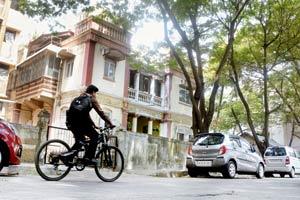
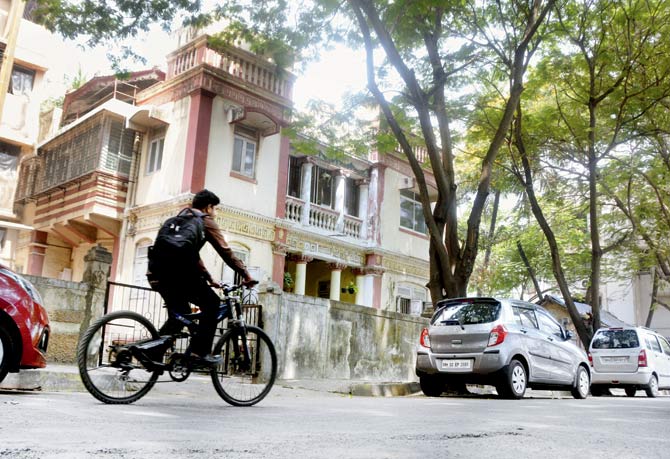
The Agaskar home on Prarthna Samaj Road
 You may be forgiven for thinking Idlai Padlai is some variation of a South Indian snack. It's the genesis of Vile Parle actually. A pair of hamlets, Padle near Santa Cruz and Irle near Andheri, resulted in the station between named Vidlai (Idlai to those dropping the "V") Padlai. From Vidlai Padlai to Vile Parle was a step for East Indian Christian villagers whose paddy patches, fruit and rose gardens were zoned east-west. Each had a freshwater talao, backwater lagoons fed by the sea and tidal marshes reaching till what is SV Road today.
You may be forgiven for thinking Idlai Padlai is some variation of a South Indian snack. It's the genesis of Vile Parle actually. A pair of hamlets, Padle near Santa Cruz and Irle near Andheri, resulted in the station between named Vidlai (Idlai to those dropping the "V") Padlai. From Vidlai Padlai to Vile Parle was a step for East Indian Christian villagers whose paddy patches, fruit and rose gardens were zoned east-west. Each had a freshwater talao, backwater lagoons fed by the sea and tidal marshes reaching till what is SV Road today.
ADVERTISEMENT
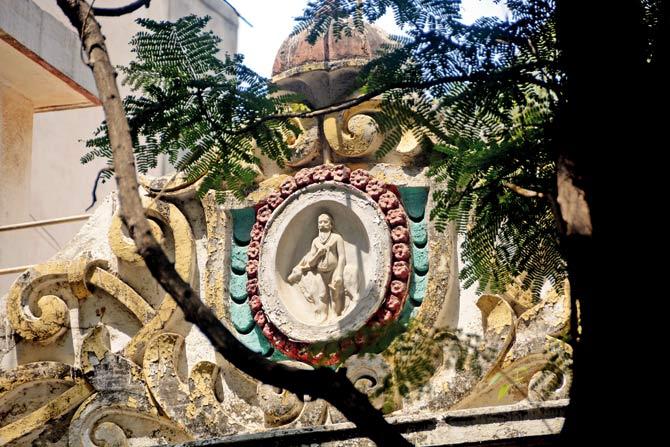
The relatively rare marble medallion topping the bungalow portrays the family's spiritual head, Samarth Ramdas, who was also Shivaji's guru. Pics/Sneha Kharabe
Historian VK Rajwade's work, Mahikavatichi Bakhar, mentions Raja Bimbadev and his successors dating to 12th-century Balaji Shinde who assumed stewardship of these twin villages. The coming of the Portuguese saw Hindu Prabhus, Panchkalashis and Brahmins embrace their new rulers' faith to form the Salsette Christian community. The 1896 plague made Maharashtrians from Girgaon and Gujaratis from Bhuleshwar flee the "Black Death" for Vile Parle's healthier spaces on land bought from Salsette farmers and fishermen.
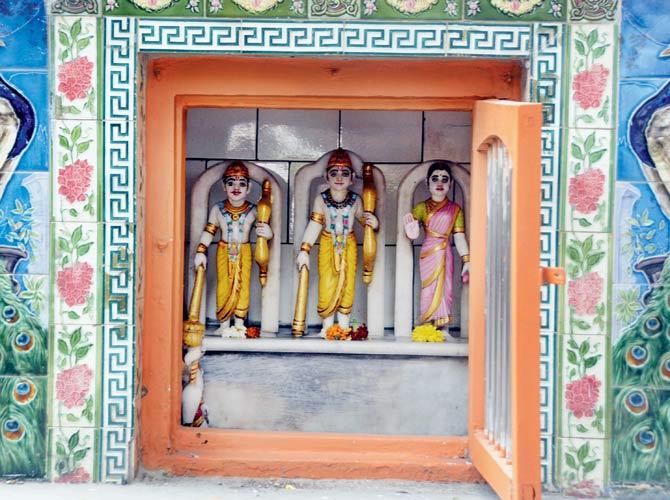
Miniature images of Rama flanked by Lakshman and Sita in the temple of Ram Vatika building
The 1906-07 construction of the station changed the demography again. Plots cultivated by Catholic clans like the Misquittas got requisitioned for railway and airport development. Seth Govardhandas Gokuldas Tejpal donated four acres for the station and built the Mor Bungalow in 1906, complete with a peacock cresting its grand dome. That ancestral seat was replaced by the municipal and Agarwal markets, says his great-grandson Shishir. This is where drama buffs converge at Dinanath Mangeshkar Natyagriha, a far cry from the rough "stage" in the field near Venkatesh Cinema where 1920s troupes like Natyapremi Mandal performed before appreciative audiences.

The unusual tile on the facade depicts an iconic painting by MV Dhurandhar
Shaded cool by the tops of rain trees interlaced in the middle of lanes, I visit families in the oldest societies of Parle, as the Maharashtrian east calls it - the Gujarati west preferring "Parla". Silversmith MV (Baburao) Paranjape pioneered cooperative housing schemes assuring middle class Maharashtrians flats in the Parleshwar, Vishnu Prasad, Ramanand, Hanuman and Shivanand colonies at rates low as Rs 3,000-4,000.
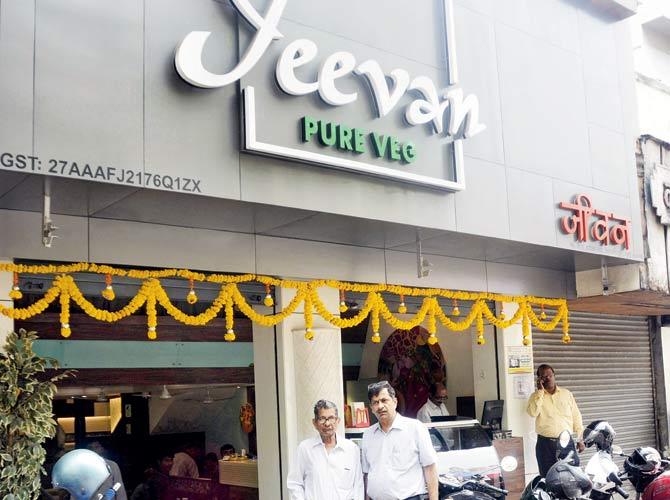
Vasudev 'Appa' Joglekar and his son Vidyesh outside Jeevan, their restaurant from 1951, which is among the eastern suburb's oldest eateries
As with most elderly couples in the area, civil contractor Sudhakar Desai and his wife Anita's children live abroad. "But we're not lonely at all," says Anita. "The average Parlekar is highly educated, fond of theatre and classical music. Our problem, in fact, is choosing which programme to attend. Kuthe vel jaato kalat nahi (We've no idea where time flies)!"
Migrants from Girgaon, the Ganus have contributed to the suburb's education ethos. "Vile Parle's typicality can be attributed to two institutions - Parle Tilak Vidyalaya and the socio-cultural organisation, Tilak Mandir," says Anil Ganu, president of Parle Tilak Vidyalaya Association. His grandfather GV Ganu built a bungalow on Chittaranjan Road and was vice-president of Tilak Vidyalaya from 1923. The school of four pupils in 1921 added two Marathi and three English schools, with a management institute. In their wake came Sathaye College and ML Dahanukar College. "Everything changed with Sathaye in 1959," says Parle Book Depot's Rohan Shah, whose grandfather Lalji Hansraj expediently switched from sitting behind a ration shop counter to selling textbooks at the spot.
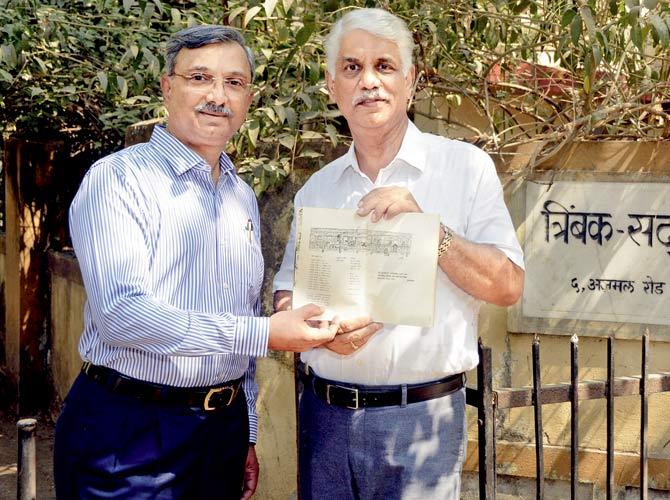
Bansi Dhurandhar at Trimbak Sadan with Jayant Deshpande, nephew of writer Purushottam Laxman (Pu La) Deshpande who lived here, describing Vile Parle in works like Asami Asami. They hold his book Batatyachi Chal open to the page on which Pu La dedicated it to three friends, including Bansi’s lawyer father Sadashiv Dhurandhar
A 1980s interview found me at dramatist Vijay Tendulkar's home on Janabai Road, where his neighbours were Loksatta editor Madhav Gadkari and film personality Baburao Pendharkar. We were joined by his illustrator friend Vasant Sarwate, who designed book jackets for Tendulkar and PL (Pu La as Purushottam Laxman Deshpande is widely known) Deshpande, the grandson of poet Vaman Mangesh Dubhashi ("Rugvedi"). Waving a copy of The New Yorker collection of cartoons, Sarwate shared he was inspired by American-Romanian Saul Steinberg.
I view PL Deshpande's legacy of humour in a gallery of outstanding photographs he bequeathed 1924-established Tilak Mandir. Eminences dropping in here included Gandhiji, Nehru, Bose, MN Roy, Rajendra Prasad, Acharya Atre and NC Kelkar. The centre facilitates polio immunisation of babies to an old age home and special senior citizens' helpline.
"Anyone depressed need read only a few lines by Pu La to cheer up," laughs his nephew Jayant Deshpande in Trimbak Sadan, an apartment block, which was the literary doyen's bungalow - Trimbak being Pu La's grandfather. The plot cost a rupee per square metre in 1932 on Ajmal Road (physician-politician Hakim Ajmal Khan was, uniquely, president of the Indian National Congress, Muslim League and Khilafat Committee).
In Vijaysinjh Vishwasrao's home I hear how his Deputy Collector father Ramchandra raised their Kunkuwadi bungalow around 1964. Supervising the building of the Western Express Highway, he impressed Chief Minister of Bombay, Morarji Desai - wearing a "magazine shield" to exemplify non-violence amid communal clashes in Golibar.
Generations of East Parlekars have illumined the world of the arts: sculptor extraordinaire GK Mhatre, painter KR Ketkar, who mentored KH Ara, thespian Chandrakant Gokhale and his actor son Vikram, singer-composers Sudhir and Shridhar Phadke, vocalist Asha Khadilkar, singer Ramdas Kamat, portraitist Suhas Bahulkar, Rangayan theatre veteran Madhav Watve, and even the state's first lady corporator Ramabai Chemburkar.
"It's in the air," declares biochemist Bansi Dhurandhar in the cosy living room of Nani Niwas, which his grandfather Anandrao Ganpatrao commissioned architects Vaidya and Gupte to build in 1930. Retired from his post as Imperial Bank agent, Anandrao sold the family's Fanaswadi house in Kalbadevi to come to the suburb - "There's always so much activity and life this side of Vile Parle."
This is a coaching class haven too. Clustered around the station years before Wi-Fi networks entered air-conditioned rooms, these were cramped with restless students. One recalls his ever hungry gang (sniffing dal-bhaat-chapattis from Jeevan and Ramakrishna) keen to dash home to catch Idhar Udhar and Rajani, the '80s midday TV hits.
At Jeevan, I relish misal pao, thalipith and sabudana khichdi. Vasudev Joglekar and son Vidyesh remember their restaurant win customers in 1951 with six-anna lunch in pure ghee with dessert. Stocking traditional poha chivda, upvaas wada, papad and puranpoli, Tejas Gokhale tells me the Vishnu Stores success story started in 1949 when his grandfather Purshottam founded a pickle business with wife Lalita's tangy mirchi and amba lonch.
Describing a very local aroma, I once wrote a piece titled "State's biggest bake". The spectacular length of Maharashtra's largest oven couldn't be disclosed, unlike its 54-inch width, Parle-G factory manager Rajkumar Nevatia had insisted - "Competitors mustn't know our productive capacity." Three gargantuan machines were introduced 50 years after the Chauhans' now shut biscuit giant began operations in 1928.
A red champa, resplendent against grey skies, pulls me to the Choksis' villa on Nehru Road. Colonial elements complementing jharokha balconies, this was erected in 1933 by diamond traders Vadilal and Chandulal Manilal Choksi who arrived from Ahmedabad in 1890. Vadilal's grandson Samir says, "Rather than risk shipping jewels, my father dealt in photography equipment. We were the first to produce black-leaf with butter paper albums."
Off Khandekar Road, archaeologist Sandeep Dahisarkar points out Ram Mandir (Vile Parle's second oldest after Parleshwar Mandir). A bit beyond he shows Laxmi Villa, Amar Kunj and Bhagwan Bhavan's pretty, half-hidden porticos and pilasters. Lauding the "muscularly Gothic" style of Vasani Niwas, my young guide identifies original railings and cow head keystones. His Asiatic Society fellowship research focused on the cultural history of Pathare Kshatriyas in Bombay Presidency. Dahisarkar conducts heritage walks in Parle.
Next to explore is the essentially Christian gaothan's thin maze of clean paths like Fernandes Street, Gonsalves Street and Misquitta Street, fragrant with curries cooking in kitchens. Tea at Ferdie Fernandes' cottage, Sunbeam, has us jump startled in conversation by loud squawks from his macaw Diana and two African Greys, till Emily the beagle trots in to figure what the fuss is about.
On Azad Road, abutting the station, I chat with Ashok Upadhyaya and his wife Tara on their ramshackle porch of the stained-glass rimmed bungalow Mohamad Ali Vahanvutty had a Brit design in 1916. Mill owners and steel merchants, the Vahanvuttys were familiar with Ashok's father Kantilal from his Reay Road steel shop. "There were other Bohra bungalows opposite this one," Upadhyaya recalls. Non-Maharashtrians tend to cluster on certain streets. Dixit Road's Marwari enclave boasts the Ruia bungalow and Prahlad Bhavan's Art Deco charm from 1949.
Serving quietly on Prarthna Samaj Road since 1932, the Sirur Balakashram shelters and educates boys till Std XII, I learn from Milind Nagarkar, president of the Mumbai Prarthna Samaj and the orphanage. His distinguished grandfather Balwant Bhau Nagarkar attended the 1893 World Parliament of Religions in Chicago with Swami Vivekananda. I'm excited to realise BB Nagarkar's other grandson is my admired author Kiran Nagarkar.
On the same stretch is the fine bungalow of Anandrao Agaskar. His wife a devotee of Samarth Ramdas, Shivaji's spiritual guru, a marble medallion depicting this saint crowns the villa. Feet away, fronting a corner of Ram Vatika, the former home of playwright BK Koranne, is a miniature shrine. The sanctum sanctorum holds doll-like Rama, Sita and Lakshman images. The tile on the façade, I discover thanks to Dahisarkar, unusually displays a painting from MV Dhurandhar's masterly Rama Panchayatana series. Small is big in this cultural capital of east suburbia, vaulting from sleepy village to the vibrant avatar that has its people proud belonging to "Amcha Parla".
Author-publisher Meher Marfatia writes monthly on everything that makes her love Mumbai and adore Bombay. You can reach her at mehermarfatia@gmail.com
Catch up on all the latest Mumbai news, crime news, current affairs, and also a complete guide on Mumbai from food to things to do and events across the city here. Also download the new mid-day Android and iOS apps to get latest updates
 Subscribe today by clicking the link and stay updated with the latest news!" Click here!
Subscribe today by clicking the link and stay updated with the latest news!" Click here!







